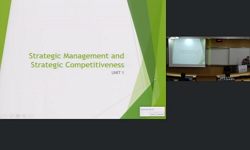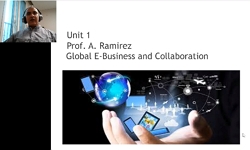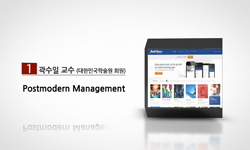목 적 : 요로 결석은 소아에서 흔하지 않은 질환이나 요로 결석의 반복과 진행은 신 기능 저하를 초래하여 결국 만성 신부전으로 진행 될 수 있는 질환이다. 또한 성인과 달리 대부분 정확한 ...
http://chineseinput.net/에서 pinyin(병음)방식으로 중국어를 변환할 수 있습니다.
변환된 중국어를 복사하여 사용하시면 됩니다.
- 中文 을 입력하시려면 zhongwen을 입력하시고 space를누르시면됩니다.
- 北京 을 입력하시려면 beijing을 입력하시고 space를 누르시면 됩니다.
https://www.riss.kr/link?id=A101470671
-
저자
이현경 (서울대학교) ; 이성하 (서울대학교) ; 한경희 (서울대학교) ; 이범희 (서울대학교) ; 최현진 (서울대학교) ; 하일수 (서울대학교) ; 최용 (서울대학교) ; 정해일 (서울대학교) ; Lee, Hyun-Kyung ; Lee, Sung-Ha ; Han, Kyoung-Hee ; Lee, Beom-Hee ; Choi, Hyun-Jin ; Ha, Il-Soo ; Choi, Yong ; Cheong, Hae-Il
- 발행기관
- 학술지명
- 권호사항
-
발행연도
2007
-
작성언어
Korean
- 주제어
-
등재정보
KCI등재후보
-
자료형태
학술저널
- 발행기관 URL
-
수록면
280-287(8쪽)
-
KCI 피인용횟수
5
- 제공처
-
0
상세조회 -
0
다운로드
부가정보
국문 초록 (Abstract)
목 적 : 요로 결석은 소아에서 흔하지 않은 질환이나 요로 결석의 반복과 진행은 신 기능 저하를 초래하여 결국 만성 신부전으로 진행 될 수 있는 질환이다. 또한 성인과 달리 대부분 정확한 원인이 알려져 있지 않으나 요로 감염, 비뇨 생식기계의 해부학적 이상, 대사성 장애 등이 요로 결석 형성의 원인이 될 수 있다. 방 법 : 1998년 9월부터 2007년 7월까지 서울대학교 어린이병원 소아과에서 요로결석으로 진단받은 73명(남:여=42:31, 평균 연령 $6.6{\pm}5.3$세)을 대상으로 후향적으로 의무기록을 분석하였다. 결 과 : 소아 요로 결석의 주 증상은 육안적 혈뇨가 18명(25%)으로 가장 많았으며, 측복부 동통 또는 복통이 13명(18%), 두 증상이 동반된 환자 10명(14%) 순이었다. 결석의 위치는 상부 요로(신 및 요관) 결석이 48명(66%), 하부 요로(방광 및 요도) 결석의 경우는 18명 (24%)이었고, 상부 및 하부 요로 모두에 결석이 있는 경우는 2명(3%)이었다. 요 정체로 요로 감염을 일으킬 수 있는 구조적인 요인이 동반된 경우는 모두 30명(41%)이었으며, 요로 결석 형성과 관련된 대사 이상은 23명(32%)에서 발견되었다. 특별한 유발 인자가 없는 경우는 17명(23%)이었다. 결석 성분 분석상 감염석이 24명(67%)으로 가정 많았으며, 칼슘석 8명(22%), 요석 3명(8%), 시스틴석 1명(3%) 순이었다. 수술적 요로 결석 제거술은 34명(46%)에서 시행되었으며 자연 배출된 환자는 13명(18%)이었다. 총 6명(8%)에서 요로 결석이 재발하였는데, 척수 수막류로 방광 확장 성형술을 시행 받은 후 신경성 방광을 보이는 환자 4명, 시스틴뇨증 환자 1명, 특별한 유발 인자가 없는 환자 1명으로 구성되었다. 결 론 : 본 연구에서 소아 요로 결석은 요 정체로 요로 감염을 일으킬 수 있는 구조적인 요인이 동반된 경우와 과칼슘뇨증을 포함하는 대사 이상을 보이는 경우가 주된 원인이었다. 따라서 소아 요로 결석 환자에서는 구조적 이상 및 대사 이상에 대한 평가가 반드시 필요하다. 또한 요로 결석의 치료에서는 증상, 결석의 위치, 성분 및 원인을 고려하여 최소한의 침습적인 치료 방법을 선택하여야겠다.
다국어 초록 (Multilingual Abstract)
Purpose : Urinary lithiasis is uncommon in children, however, it may lead to chronic renal insufficiency and even end stage renal disease. The etiology of stone formation in children is largely unknown; although the most common causes are known to be ...
Purpose : Urinary lithiasis is uncommon in children, however, it may lead to chronic renal insufficiency and even end stage renal disease. The etiology of stone formation in children is largely unknown; although the most common causes are known to be associated with congenital anomalies of the genito-urinary(G-U) tract, urinary tract infections(UTI), and metabolic diseases. Methods : A total of 73 children(male:female=42:31, mean age $6.6{\pm}5.3$ years) presented with urinary lithiasis between Sep. 1998 and Jul. 2007 at Seoul National University Children's Hospital. The medical records were reviewed retrospectively. Results : The most common presenting symptoms were gross hematuria(28/73, 38%) and flank or abdominal pain(23/73, 32%). The stones were located in the upper urinary tract in 48 patients(66%), in the bladder in 18(24%), and in both the bladder and upper urinary tract in 2 (3%). Congenital anomalies of the G-U tract with/without UTI were detected in 30 children (41%), hypercalciuria with/without hypercalcemia in 15(20%), and other metabolic diseases in 8(11%). In 17 patients(23%), no underlying cause of stone formation was detected. The majority of stones were infected stones(24/36, 67%), which were followed by calcium stones(8/36, 22%), uric acid stones(3/36, 8%). and cystine stones(1/36, 3%). Thirty-four patients(46%) underwent surgical procedures and/or extracorporeal shockwave lithotripsy for stone removal, and 13(18%) passed stones spontaneously with/without medical management. Stones recurred in 6 patients(8%): 4 with neurogenic bladder augmented by ileocystoplasty, 1 with cystinuria, and 1 with unknown etiology. Conclusion : The common causes of urinary lithiasis in children were congenital anomalies of the G-U tract with/without UTI and metabolic disorders including hypercalciuria/hypercalcemia. For the management of stones, minimally invasive procedures should be chosen on the basis of accompanying symptoms and the composition, locations and etiology of stones.
참고문헌 (Reference)
1 "Urolithiasis in pediatric patients: a single center study of incidence, clinical presentation and outcome" 177 : 2300-2305, 2007
2 "Urolithiasis in children" 118-22, koreanjurol1986
3 "Urolithiasis in childhood" 16 : 60-63, 2000
4 "Urolithiasis in Childhood" 1047-50, koreanjurol1983
5 "Urinary tract calculi in children" 318-20, jurol1973
6 "Urinary oxalate and urate to creatinine ratios in a healthy pediatric population" 34 (34): 1999
7 "Uric acid excretion in normal children" 911-4, jpediatr1978
8 "Renal calculus in children" 306-7, jurol1972
9 "Reference values for urinary calcium excretion and screening for hypercalciuria in children and adolescents" 25-31, eurjpediatr1984
10 "Plasma and urine measurements for monitoring of treatment in the primary hyperoxaluric patient" 10 : 8-10, 1995
1 "Urolithiasis in pediatric patients: a single center study of incidence, clinical presentation and outcome" 177 : 2300-2305, 2007
2 "Urolithiasis in children" 118-22, koreanjurol1986
3 "Urolithiasis in childhood" 16 : 60-63, 2000
4 "Urolithiasis in Childhood" 1047-50, koreanjurol1983
5 "Urinary tract calculi in children" 318-20, jurol1973
6 "Urinary oxalate and urate to creatinine ratios in a healthy pediatric population" 34 (34): 1999
7 "Uric acid excretion in normal children" 911-4, jpediatr1978
8 "Renal calculus in children" 306-7, jurol1972
9 "Reference values for urinary calcium excretion and screening for hypercalciuria in children and adolescents" 25-31, eurjpediatr1984
10 "Plasma and urine measurements for monitoring of treatment in the primary hyperoxaluric patient" 10 : 8-10, 1995
11 "Pediatric urolithiasis: medical and surgical management" 47 : 292-303, 1996
12 "Pediatric urolithiasis: evaluation of risk factors in 95 children" 37 : 129-133, 2003
13 "Pediatric urolithiasis in sub-Saharan Africa: a comparative study in two regions of Cameroon" 37 : 106-111, 2000
14 "Pediatric urolithiasis during the past 10 years: retrospective analysis" 42 : 577-581, 2001
15 "Pediatric urolithiasis" 24 : 173-184, 1997
16 "Normal urinary calcium/creatinine ratios in African-American and Caucasian children" 16 : 133-139, 2001
17 "Nephrolithiasis in children" 20 : 1587-1592, 2005
18 "Nephrolithiasis in Children" 21-30, pediatrrev1989
19 "Is the pediatric ureter as efficient as the adult ureter in transporting fragments following extracorporeal shock wave lithotripsy for renal calculi larger than 10 mm?" 166 : 1862-1864, 2001
20 "Extracorporeal shock wave lithotripsy in children" 167 : 2164-2166, 2002
21 "Extracorporeal shock wave lithotripsy in childhood" 1106-8, jurol1987
22 "Etiological factors in pediatric stone recurrence" 606-8, jurol1989
23 "Epidemiology of paediatric renal stone disease in the UK" 88 : 962-965, 2003
24 "Electromagnetic extracorporeal shock wave lithotripsy in children" 1229-31, jurol1991
25 "Clinical review of pediatric urolithiasis: Etiology and Treatment" 37 : 677-682, 1996
26 "Clinical outcome of pediatric stone disease" 167 : 670-673, 2002
27 "Clinical observation on urolithiasis in childhood" 179-82, koreanjurol1984
28 "Childhood urolithiasis in Britain" 291-5,
29 "Bladder calculi in children who perform clean intermittent catheterization" 85 : 879-884, 2000
30 "Bladder calculi in augmentation cystoplasty in children" 56 : 482-487, 2000
31 "A study of the etiology of idiopathic calcium urolithiasis in children: hypocitruria is the most important factor" 164 : 162-165, 2000
동일학술지(권/호) 다른 논문
-
병력취득 설문지를 이용한 야뇨증의 형태에 따른 임상양상의 비교
- 대한소아신장학회
- 최정연
- 2007
- KCI등재후보
-
- 대한소아신장학회
- 이강균
- 2007
- KCI등재후보
-
전신성 홍반성 루프스와 동시 발병한 혈전성 혈소판 감소성 자반증 2예
- 대한소아신장학회
- 김혜영
- 2007
- KCI등재후보
-
모야모야병과 동반된 신 동맥 협착에 따른 신성 고혈압을 보인 1례
- 대한소아신장학회
- 김정아
- 2007
- KCI등재후보
분석정보
인용정보 인용지수 설명보기
학술지 이력
| 연월일 | 이력구분 | 이력상세 | 등재구분 |
|---|---|---|---|
| 2024 | 평가예정 | 계속평가 신청대상 (계속평가) | |
| 2022-01-01 | 평가 | 등재후보학술지 선정 (신규평가) |  |
| 2021-12-01 | 평가 | 등재후보 탈락 (계속평가) | |
| 2019-01-01 | 평가 | 등재후보학술지 선정 (신규평가) |  |
| 2018-12-01 | 평가 | 등재후보 탈락 (계속평가) | |
| 2017-12-01 | 평가 | 등재후보로 하락 (계속평가) |  |
| 2016-01-12 | 학술지명변경 | 한글명 : 대한소아신장학회지 -> Childhood Kidney Diseases외국어명 : Journal of the Korean Society of Pediatric Nephrology -> Childhood Kidney diseases |  |
| 2013-01-01 | 평가 | 등재 1차 FAIL (등재유지) |  |
| 2010-01-01 | 평가 | 등재학술지 선정 (등재후보2차) |  |
| 2009-01-01 | 평가 | 등재후보 1차 PASS (등재후보1차) |  |
| 2008-01-01 | 평가 | 신청제한 (등재후보1차) |  |
| 2007-01-01 | 평가 | 등재후보 1차 FAIL (등재후보2차) |  |
| 2006-01-01 | 평가 | 등재후보 1차 PASS (등재후보1차) |  |
| 2004-01-01 | 평가 | 등재후보학술지 선정 (신규평가) |  |
학술지 인용정보
| 기준연도 | WOS-KCI 통합IF(2년) | KCIF(2년) | KCIF(3년) |
|---|---|---|---|
| 2016 | 0.12 | 0.12 | 0.13 |
| KCIF(4년) | KCIF(5년) | 중심성지수(3년) | 즉시성지수 |
| 0.11 | 0.11 | 0.332 | 0 |





 ScienceON
ScienceON






